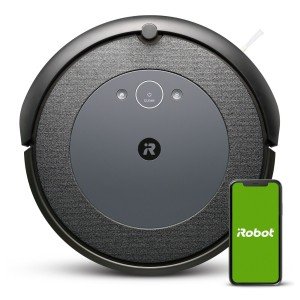Why You Should Concentrate On Improving Robotic Vacuums
The Rise of Robotic Vacuums: A Comprehensive Overview
In today's hectic world, innovation is consistently progressing to make our lives simpler, and the household cleaning section has actually seen one of the most notable advancements: the robotic vacuum. This intelligent gadget not just saves energy and time but likewise guarantees a cleaner home environment with very little manual effort. This post explores the remarkable development of robotic vacuums, how they work, their benefits and drawbacks, market trends, and future instructions.
The Evolution of Robotic Vacuums
Robotic vacuums have made terrific strides because their creation in the late 1990s. The very first commercially available robotic vacuum was introduced in 1996, followed by various designs, each designed with intensifying sophistication and features. Here is a short timeline of robotic vacuum advancement:
Year
Event
1996
Launch of the very first robotic vacuum (Electrolux's Trilobite)
2002
iRobot Roomba is released, making robotics mainstream
2010
Introduction of advanced mapping and navigation features
2017
Integration of AI and smart home compatibility
2022
Release of highly advanced models featuring self-emptying dustbins
How Robotic Vacuums Work
Robotic vacuums utilize a mix of sensors, algorithms, and expert system to browse spaces successfully. Here's how they operate:
Navigation: Most robotic vacuums utilize a series of sensors to spot challenges and navigate around furnishings. Some high-end models integrate LIDAR (Light Detection and Ranging) innovation to create detailed maps of the environment.
Cleaning Mechanisms: They are geared up with turning brushes and suction systems to collect particles from various surface areas. Depending upon the design, they can transition between carpets and hard floors effortlessly.
Smart Features: Many contemporary robotic vacuums are Wi-Fi allowed, permitting users to control them remotely through a smart device app. Functions commonly consist of scheduling, mapping out cleaning paths, and integration with other smart home gadgets.
Self-Maintenance: High-end systems might feature self-emptying capabilities, where the robot can dock itself to a base that gathers dust and particles without human intervention.
Advantages of Robotic Vacuums
Robotic vacuums have actually gathered tremendous popularity, and for good reasons. Here are some of the most significant advantages:
- Time-Saving: Automating the cleaning process permits users to participate in other meaningful activities.
- Efficient Cleaning: Regular cleaning can be quickly attained by arranging the robot to tidy daily or weekly, keeping dirt and allergens at workable levels.
- Compact Design: Their little size allows them to fit under furniture and in hard-to-reach locations.
Regardless of their advantages, robotic vacuums also feature limitations:
- Limited suction power: While they work for maintaining clean floorings, they might not match the deep cleaning of traditional vacuums.
- Battery life: Most models need to go back to their dock after a particular period of usage.
- Preliminary expenses: High-quality robotic vacuums can be expensive, though rates have been reducing with advancements in innovation.
Existing Market Trends
The market for robotic vacuums is broadening rapidly. According to a current marketing research report, the international robotic vacuum cleaner market is expected to reach ₤ 7.2 billion by 2027, growing at a CAGR of 23.5%, driven by numerous factors:
Increased Adoption of Smart Home Devices
The rise of smart home technology has actually motivated consumers to incorporate robotic vacuums into their families. Numerous robotic vacuums work effortlessly with home assistants like Amazon Alexa and Google Assistant, simplifying their operation.
Advances in Robotics and AI
As the innovation behind robotic vacuums progresses, models are being geared up with better navigation systems, AI algorithms for learning individual cleaning habits, and boosted features for specific floor types.
Focus on Health and Hygiene
The heightened awareness of tidiness and hygiene, particularly due to recent global events, has driven consumers to buy devices that routinely eliminate dust, allergens, and animal hair from their homes.
Future Directions
As innovation advances, robotic vacuums are anticipated to evolve even more, including features that increase their efficiency in households. Prepared for advancements consist of:
- Improved AI Learning: With developments in machine learning, future designs will be better at comprehending their environment and adapting to the requirements of their owners.
- Multi-Purpose Design: Potential future models may include features for mopping, sanitizing, and air filtration in addition to vacuuming.
- Sustainability: As eco-consciousness rises, manufacturers are most likely to concentrate on energy efficiency, recyclable products, and sustainable production practices.
FAQs About Robotic Vacuums
**1. Can robotic vacuums vacuum on carpet?Yes, most robotic vacuums can transition between various floor types, including carpets and hard floors. 2. How typically need to I run my robotic vacuum?It depends
on your household's cleaning needs, but numerous users
arrange their robotic vacuums to run everyday or every number of days. 3. Are robotic vacuums worth the investment?For many customers, the time saved and benefit provided by robotic vacuums makes them rewarding,
**
particularly for busy homes. 4. Can I control my robotic vacuum remotely?Most modern-day robotic vacuums can be managed through a smart device app, permitting scheduling and monitoring from anywhere. 5. Do I still need a standard vacuum cleaner?While robotic vacuums efficiently manage everyday cleaning, a conventional vacuum may still be needed for deep cleans or hardermesses. Robot Vacuum Mops of robotic vacuums reflects a considerable leap in automating housework, combining ingenious innovation with user-friendly operation. As the trend toward smart homes continues and consumer expectations evolve, robotic vacuums will likely keep improving, providing ever-greater convenience and efficiency in preserving clean home. As homeowners consider the prospective benefits and restrictions of these gadgets, it is clear that robotic vacuums have solidified their reputation as important tools in modern-day home management. 